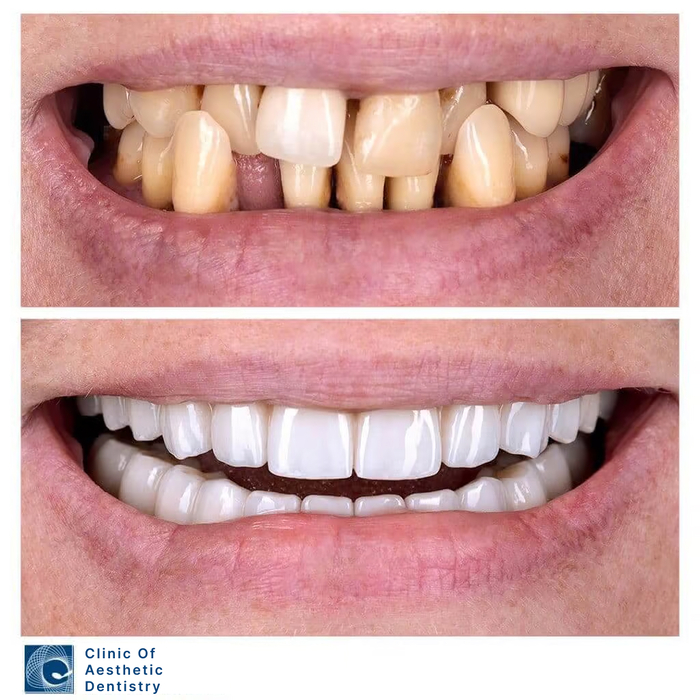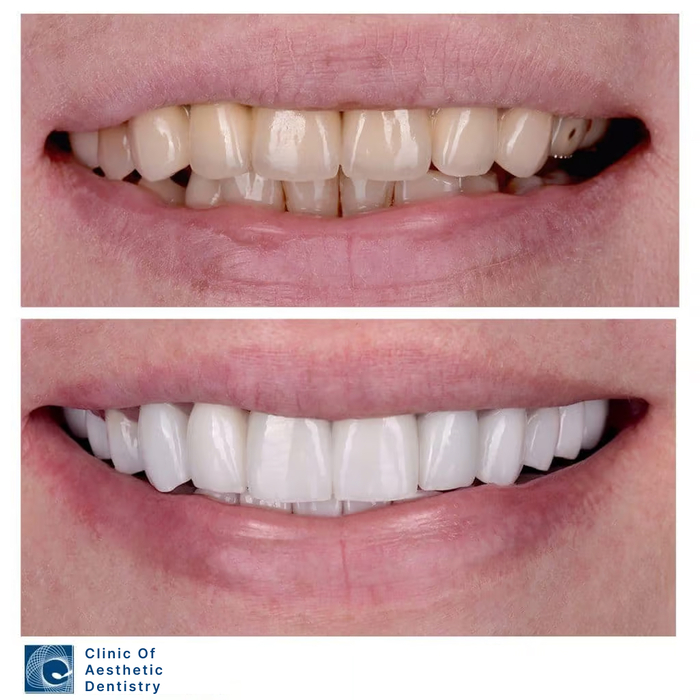Veneer Replacement — How Often Do You Have to Replace Your Veneers

Contents:
Despite the long lifespan of veneers, they need to be changed once in a while. This can be due to material fragility, improper care, injuries, etc. In case there are cavities behind the tooth the veneer, the restoration should be removed and the tooth treated. Let’s find out what veneers are and how they are placed.

What Are Veneers?
Veneers are thin ceramic plates placed on the front surface of teeth to improve their appearance, protect them from damage and create a beautiful smile. These overlays are made individually; if desired, you can choose their length, size, colour, shape and function.
Veneers are a cosmetic treatment for teeth because they are placed more for aesthetic reasons. Veneers also perform restorative functions and protect the tooth surface from damage. They are an excellent option for patients who have chipped or stained teeth.
The procedure is relatively fast and minimally invasive. Depending on the colour of your teeth and the desired result, overlays are available in various shades.
After you get the veneers, talk to your doctor about toothbrushes and toothpaste to ensure they are compatible with your veneers. Try to avoid abrasive toothpaste as it can damage the veneers. It is also important to use dental floss and mouthwash when you cannot brush your teeth after eating.
Besides daily oral care, regular check-ups are an integral part of hygiene. This is also helpful as it can ensure that the dentist is aware of the condition of your veneers if anything is amiss.
There are certain factors beyond your control that can damage veneers. Accidents and injuries can affect the integrity of your veneers – they are pretty strong, but you can still damage them. Take care not to damage the veneers during active sports.
There are several common types of materials used to make dental veneers, including:
1. Porcelain Veneers
Porcelain is the most common material for veneers. They are tooth-coloured, versatile and last from 10 to 15 years.
Porcelain veneers are made from ceramic materials and are more stain-resistant than composite veneers. When placing porcelain veneers, the main advantage is the procedure’s conservative and minimally invasive.
The reason is the minimal preparation to place the veneer successfully. Veneer placement is not a fully restorative procedure such as dental crowns or bridges, so they are a reasonably popular solution in aesthetic dentistry.
2. Composite Veneers
Composite veneers are a cosmetic alternative to porcelain veneers. They are made from the same material as fillings. Composite veneers are slightly cheaper than porcelain veneers. They are usually manufactured quickly and are an option for same-day treatment.
Direct composite veneers (composite) are placed on the teeth, not in a dental laboratory. Like white porcelain veneers, composite veneers require tooth preparation before placement. However, they typically last 5 to 7 years, compared to 15 years for porcelain veneers.
Composite material is more durable than porcelain. When the composite is chipped, the damaged area can be repaired. When porcelain breaks, the veneer is to be replaced.
3. Palatal Veneers
The veneers are commonly used to restore posterior teeth. However, palatal veneers are a special onlay used to restore anterior teeth. Causes of palatal damage to anterior teeth include deep bite, bruxism, and dental erosion.

Erosion can be caused by cyclic vomiting and severe acid reflux.
What is the lifespan of veneers?
Veneers are a trendy treatment option if you want to improve your smile. They can correct discolouration and damage to your teeth and even resize them to create a uniform appearance and bright smile. But, you might be wondering how durable porcelain veneers are? There are many benefits when it comes to porcelain overlays, including durability. Below you will find helpful information about veneers and why they may be right for you.
The lifespan of veneers, subject to all procedures and proper care, is at least ten years. The reason is that veneers are not only aesthetically beautiful but also very durable. This is even though porcelain veneers are very thin. The veneers are made from high-quality porcelain, durable and resistant to daily wear and tear associated with chewing and biting. Thanks to this, veneers can last from ten to fifteen years. Patients report that veneers last longer because good care can increase their life span.
While veneers are strong and durable, there are certain limitations. Maintaining good oral health can extend the life of your veneers, requiring constant daily care. Even though your veneers are made of porcelain, they need to be cared for just like natural teeth. This includes brushing your teeth for two minutes at least twice a day.
What Happens to Veneers in 10 Years?
Types of dental veneers come from metal-based porcelain veneers, zirconia veneers, porcelain veneers, and laminate veneers. When assessing the condition of veneers in 10 years, even if you have the best and most expensive veneers, it often makes sense to replace them.
Time and stress on the teeth gradually destroy and discolour the coating. It is impossible to guarantee the proper veneer placement in case of dental problems with teeth or gums. If the teeth underneath the veneers are in good condition, dentists can place new dental veneers that will last at least ten years.
It is essential to determine the right time to replace old veneers. A visit to the dentist for regular check-ups will help you understand the condition of your veneers and calculate when they need to be replaced.
Dentists often have to remove old veneers due to gum problems. Another common complaint is the destruction of the tooth under the veneer. Bleeding gums and bad breath warn the patient that problems with veneers have begun. However, even if there is no toothache, old dental veneers may need to be replaced before it is too late.
What Happens To the Tooth Under the Veneer?
Many patients ask similar questions. The tooth continues to perform its functions. But, it is essential to keep an eye on the veneer. For example, bacteria can build up between your teeth and cause cavities if you don’t floss regularly. In this case, they can damage the natural tooth enamel at the ends of the veneer. If this happens, bacteria can begin to destroy tooth enamel and cause cavities.

How Often Do Veneers Need To Be Replaced?
Veneers are indeed a permanent cosmetic solution. But, the reality is that, like dental crowns, fillings, bridges and other restorations, you will need to replace them with new ones over time. Depending on how well you care for them, they can last ten years or more. But ultimately, replacing veneers is essential if you want beautiful teeth and a perfect smile.

